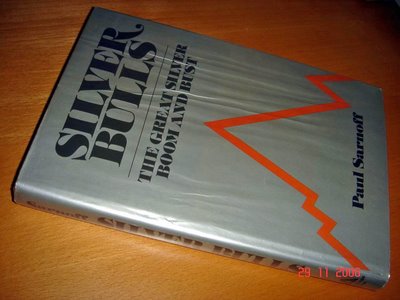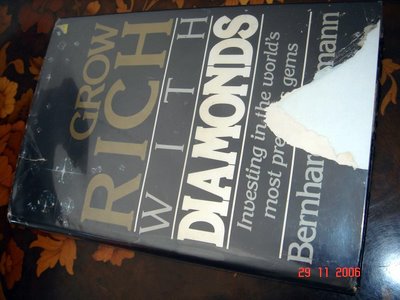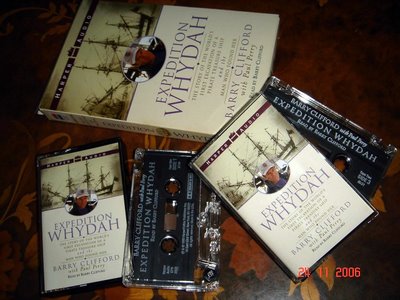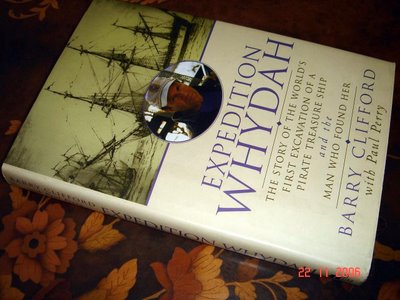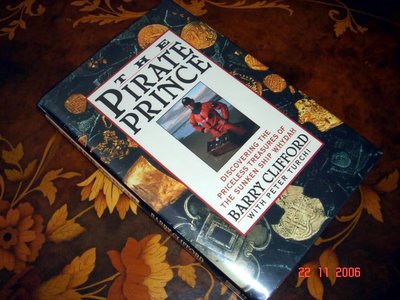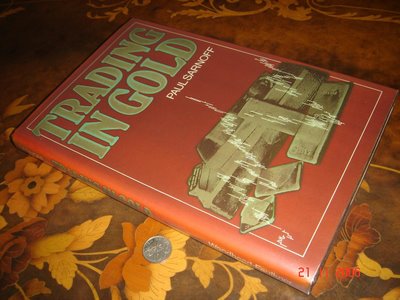Eichmann in Jerusalem: A Report on the Banality of Evil, Revised and Enlarged Edition by Hannah Arendt, First Edition, New York: Viking Press, 1964, 312 pages, 22cm, Bibliography, Index.Hannah Arendt's
Eichman in Jerusalem: A Report on the Banality of Evil was completed in November 1962, when she was then a Fellow of the Center for Advanced Studies at Wesleyan University. Regarded as an authority on the subject of totalitarianism, Miss Arendt attended the trial of Adolf Eichmann in 1961 as a reporter for
The New Yorker magazine. The content in her book had been assembled and revised from a series of articles originally appeared in
The New Yorker in February and March 1963.
In her book, Miss Arendt establishes for the reader that the sole purpose of the trial of Eichmann is to render justice, as when she justifies that "this trial had to take place in the interest of justice and nothing else." In this trial, Eichmann was prosecuted, judged, and punished for his crimes against the Jewish people. After realizing the role played by Eichmann (who was kidnapped in Argentina and brought to Jerusalem to stand trial) in the "Final solution of the Jewish question," the reader is able to understand why Miss Arendt should believe that "the facts for which Eichmann was to hang had been established 'beyond reasonable doubt' long before the trial started, and they were generally known to all students of the Nazi regime." Without any doubt, the trial's sole purpose was achieved.
Miss Arendt demonstrates to the reader that the judges in the trial of Eichmann were right when they proclaimed that the State of Israel was also the State of the Jews and, therefore, had jurisdiction over a crime committed against the Jewish people. As the reader is able to realize, Miss Arendt would like to justify the kidnap of Eichmann. But more importantly, she portrays the willingness and desire of Israel to bring any Nazi criminal like Eichmann to stand trial. Miss Arendt has been critical about the unwillingness of the then Federal Republic of Germany to bring the major Nazi criminals to justice. The reluctance on the part of the then West German authorities to seek out Nazi criminals still at large would certainly provide a valid reason for the State of Israel to take the initiative.
The Nazi criminal who the State of Israel brought to stand trial in 1961 was Adolf Eichmann, head of the Jewish Affairs Section of the Gestapo in the Third Reich. By 1938, all members (about 30,000 persons) of the Gestapo were required to join the Nazi Party's
Schutzstaffeln (SS) or the Elite Guard, led by Heinrich Himmler, who was also the chief of the Gestapo. A Party apparatus that came under the charge of the SS was the
Sicherheitsdienst (SD) or the Nazi Security Service, led by Reinhardt Heydrich, who was also the chief of the State Security Police. Eichmann, being an officer of the State apparatus and a servant of the totalitarian Third Reich, was drawn into the Party's cobweb. He last held the rank of
Obersturmbannfuhrer or Lieutenant-Colonel in the SS.
Writing about Eichmann, the man who inherited the task of finding a "final solution of the Jewish question," Miss Arendt explains to the reader that Eichmann "was recognized not merely as an expert on 'the Jewish question,' the intricacies of Jewish organization and Zionist parties, but as an 'authority' on emigration and evacuation, as the 'master' who knew how to make people move." Her purpose is to remind the reader that Eichmann was no psychopath, but a sane administrator, a civil servant, a man sitting in a respectable office drawing out plans for the deportation, ghettoization, and annihilation of Jews in Europe. Miss Arendt describes vividly Eichmann's role in the destruction of European Jewry from "The First Solution: Expulsion" to "The Second Solution: Concentration" and, finally, to "The Final Solution: Killing" thereby showing the reader that Eichmann clearly had no ground to plead not guilty simply by offering an excuse that he was performing his duty in the Third Reich and obeying the Fuhrer Adolf Hitler's order.
Miss Arendt also reveals Eichmann's Nisko plan to settle the Jews, which was repudiated by Hans Frank, governor-general of occupied Poland. Eichmann then came up with the Madagascar project but it was stalled by the Nazi invasion of Soviet Russia. He blamed the rivalries, quarrels, and competition among the diverse bureaucracies within the Third Reich for the failure of Madagascar project. When all his plans for the mass evacuation of all Jews did not materialize, Eichmann was finally directed by Heydrich to execute the "final aim" which was the "physical extermination" of all Jews. Hence, Eichmann carried out his duty of rounding up the Jews and deporting them to death camps. In August 1944, he was able to report to Himmler that six million Jews had been killed. The sinister role which Eichmann had played, without any doubt in the reader's mind, should be judged instrumental in causing such an outrageous loss of human lives. As such, Miss Arendt is absolutely correct to conclude that Eichmann was guilty of participation in mass murder and deserved to hang. She describes Eichmann as "the man who was to go down in history as one of the arch-murderers of the Jewish people...." The reader would no doubt agree with her.
Despite having all the factual content presented brilliantly in a readable manner and calling for more of such a kind of trial against Nazi criminals in the name of justice, Miss Arendt has somehow accused the Jewish people for co-operating with the Nazis in their own destruction. She feels certain that the Nazis needed Jewish co-operation in order to execute their genocidal plan, and if the Jews had not co-operated, the Nazis might not have a massive labor power to assist them on a large-scale annihilation of the Jews. Miss Arendt may thus be insinuating that the Jews had helped the Nazis to kill more Jews. But had the Jews decided not to co-operate with the Nazis, the community would sooner be wiped out. Thus in the hope of saving some lives, the Jews opted to co-operate with the Nazis, most reluctantly.
Going further in her accusation of the Jews for co-operating with the Nazis, Miss Arendt speculates that the loss of lives would have been far less had the Jews been leaderless and unorganized. How wrong can she be on this point because the leaderless and unorganized eastern European Jews were, likewise, killed in large numbers. The
Einsatzgruppen (SS special murder squads operating in Eastern Europe) annihilated well over half a million Russian Jews in the first few months following Hitler's invasion of Soviet Russia.
Miss Arendt was especially critical of the role played by the
Judenrate or the Jewish councils in their co-operaton with the Nazis in areas such as the selection of victims for the concentration camps and recruitment of Jewish policemen to round up these victims. She does not take into consideration the policy of appeasement, which was a traditional diplomatic tactic of the Jewish leaders. In this instance, most unfortunately, the Jewish leaders failed to recognize the unprecedented and revolutionary character of the Nazi regime. Having seen the German troops as the most well-behaved outfit during World War One, the Jewish leaders had assumed that the Nazi Germans would act likewise henceforth. Even though such a grave mistake was made by the Jewish leaders regarding the intentions of the Nazis toward them and their people, Miss Arendt should not blame the Jewish leaders squarely for this unintentional mistake. Besides, nobody at that time could fully comprehend and foresee the potential evil of the Nazi regime. The Jews definitely did not really know what was about to happen to them in the "final solution" dealt by the Nazis.
And when the full horror of the "final solution" was finally revealed to the Jews, Miss Arendt questions why the Jews had not found opportunities to escape or offer resistance. Miss Arendt has asked an unfair question, for how could the Jews escape or offer resistance when the whole of Europe had turned into a battle-ground and all borders had been closed; most of the Jews were scattered over vast areas; possession of firearms was prohibited by law; the Jews at that time were a people lacking in military traditions? Miss Arendt has thus wrongly blamed the Jews for not taking the initiative to escape or offer resistance.
Finally, Miss Arendt wrongly blames the Zionists for not being able to get a deal with the Nazis in transferring more Jews to Palestine. She thinks "only Zionists had any chance of negotiating with the German Authorities..." and "hence, the Zionists could, for a time, at least, engage in a certain amount of non-criminal co-operation with the Nazi authorities...." Having emigrated from Germany in 1933, when the going was easy, Miss Arendt seems to think that the situation for emigration should remain the same in war-torn Nazi-occupied Europe. Of course the situation was not the same and escaping became extremely difficult during the war. Thus it is wholly unwarranted for Miss Arendt to blame the Zionists for not being able to assist more Jews in leaving Europe.
Discounting on these few flaws made by Miss Arendt in her book,
Eichmann in Jerusalem: A Report on the Banality of Evil can rightfully be ranked among the great classics. The reader should appreciate Miss Arendt's smooth style of writing, ample factual research, and good overall presentation of the material. This is a book all students and researchers of the study of Nazi war crimes can greatly benefit from.
booksholocaust
 Sarnoff, Paul, Trading in Silver: How to Make High Profits in the World Silver Market, First Edition, London: Woodhead-Faulkner Limited, 1988, pp141.
Sarnoff, Paul, Trading in Silver: How to Make High Profits in the World Silver Market, First Edition, London: Woodhead-Faulkner Limited, 1988, pp141.